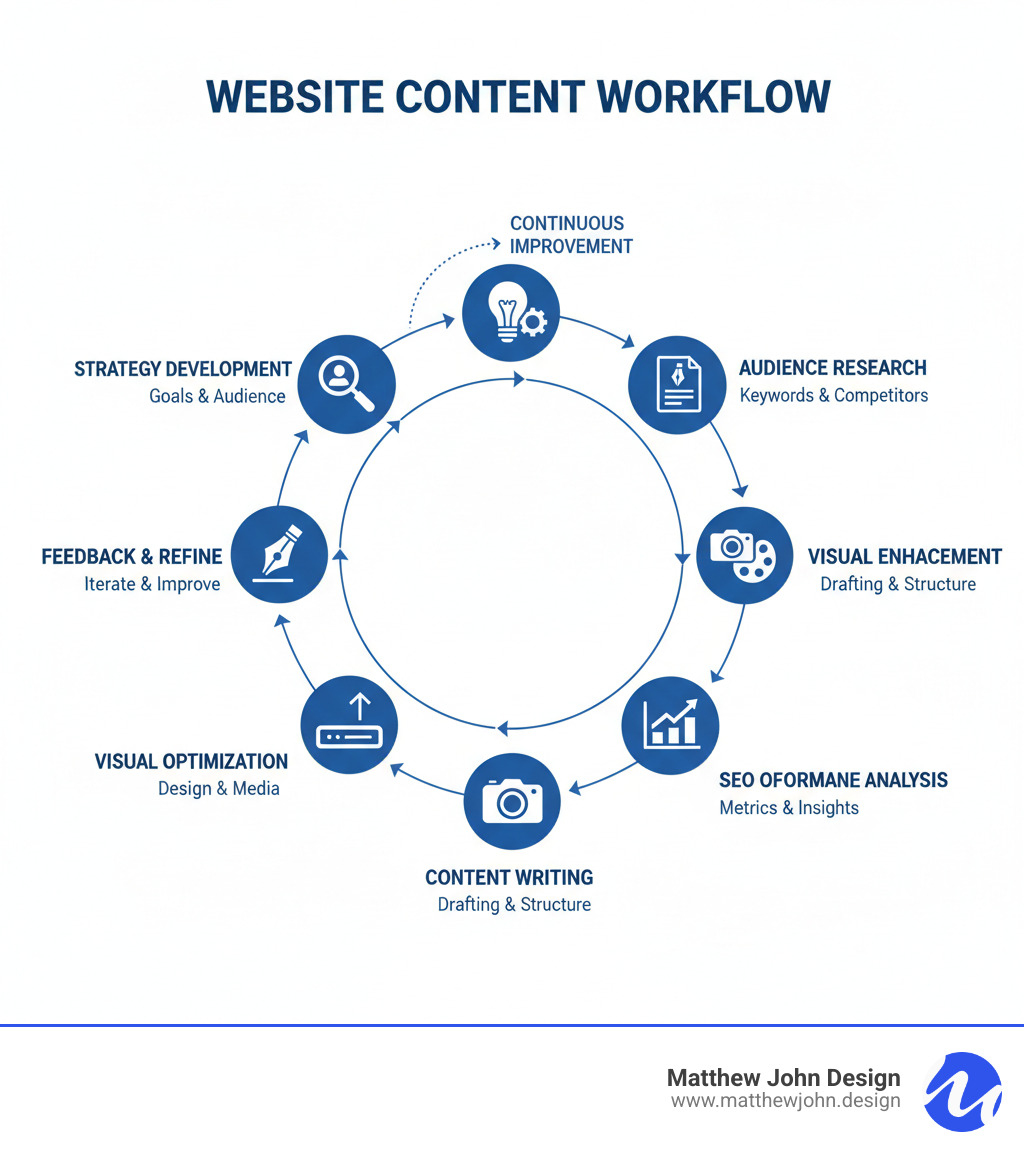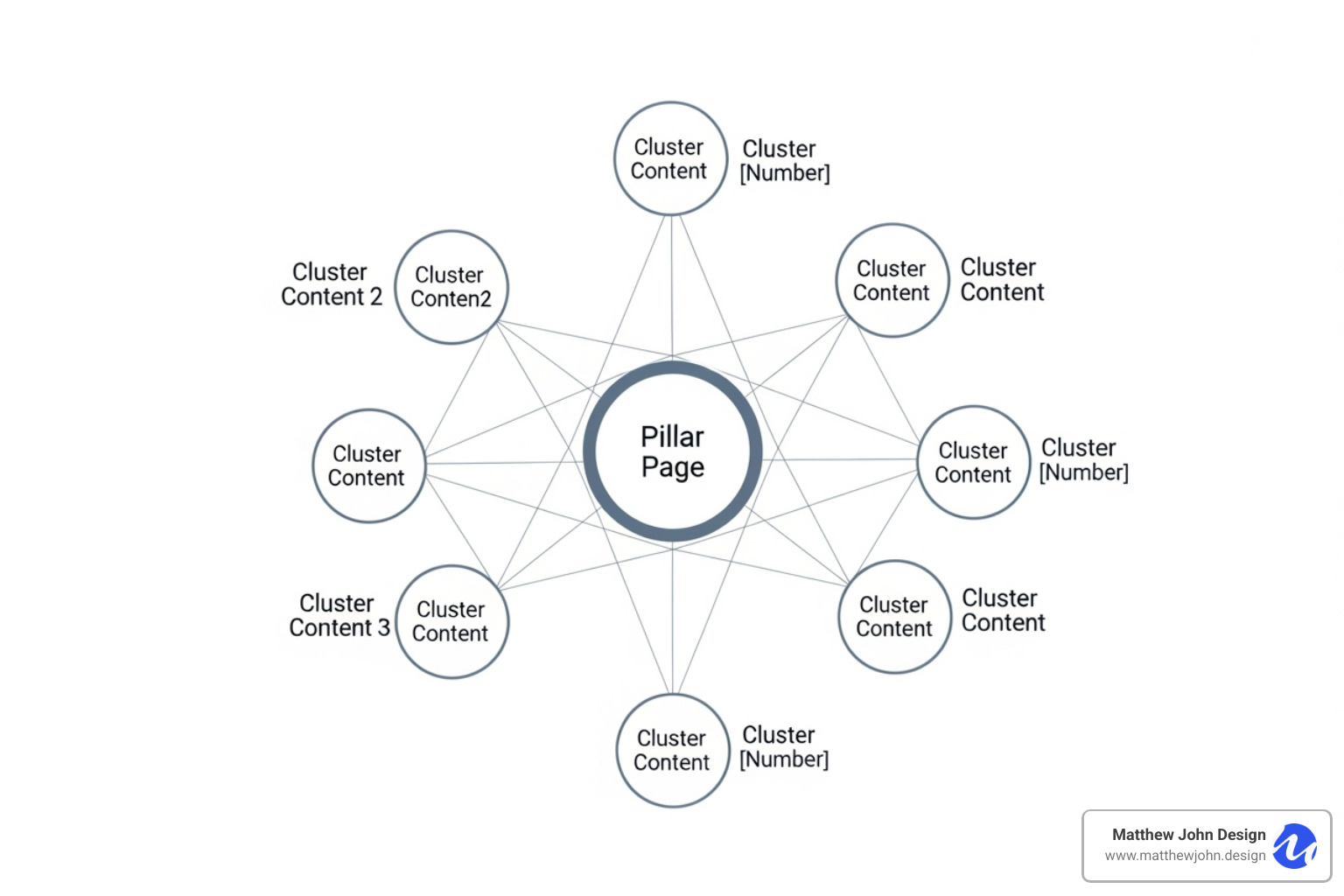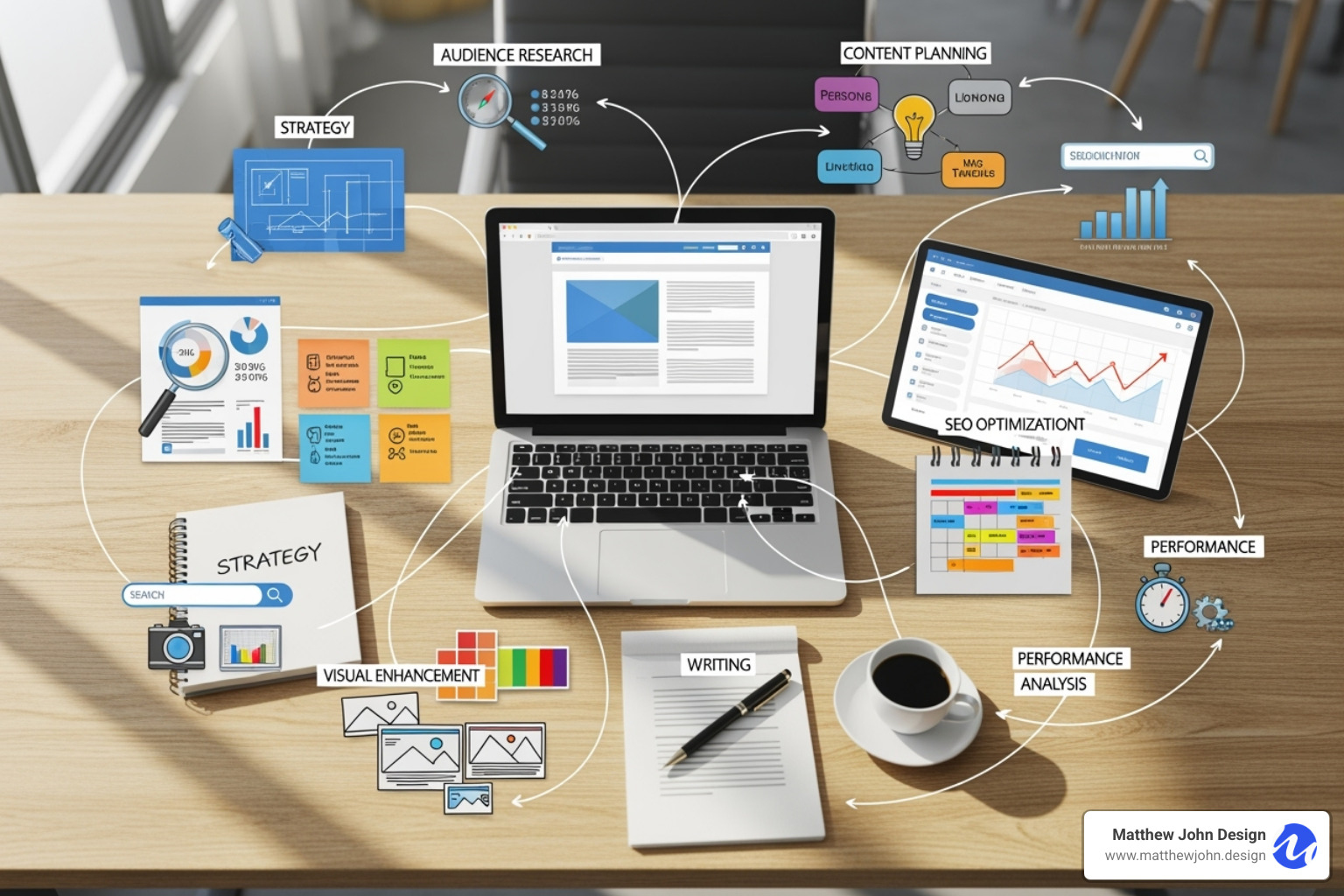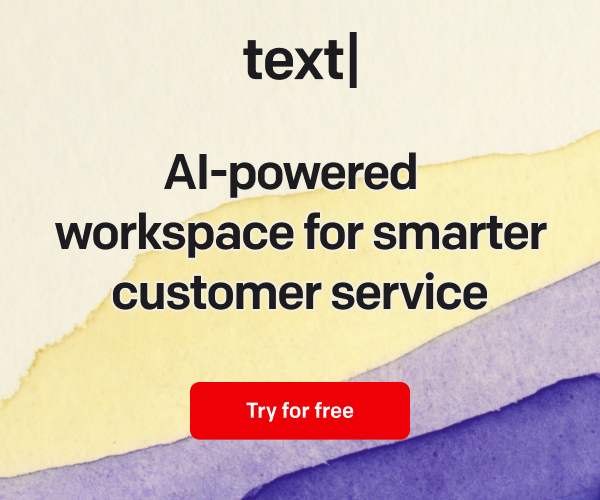Any information contained on this Website is not legal advice and should not be treated as such. You should always contact an attorney for help with your specific legal needs and issues. We may also earn a commission when you click links to our partners and purchase goods or services. For more information, read our Disclaimers Policy.
Why Website Content Creation Matters for Your Business Success
The website content creation process is a strategic approach to developing valuable content that connects with your audience and drives business results. It serves as your digital first impression, and in a world where visitors quickly scan for information, every word counts toward building trust and driving conversions.
The challenge isn't just creating content—it's creating content that works. Without a structured process, businesses often struggle with inconsistent messaging, poor search visibility, and content that fails to convert. A documented strategy ensures your content aligns with business goals, resonates with your target audience, and delivers measurable results, turning casual browsers into loyal customers.

Table of Contents
This guide walks you through building a website content creation process that drives real business results. We'll cover everything from strategy and execution to monitoring and improvement, giving you a complete roadmap for success.
Here's what we'll cover:
Phase 1: Building Your Content Strategy Foundation - Define your audience, master keyword research, and structure content with topic clusters.
The 7-Step Website Content Creation Process - Follow our step-by-step guide from ideation and writing to optimization and promotion.
Phase 3: Monitoring, Scaling, and Avoiding Mistakes - Learn to track performance, ensure accessibility, and improve your content over time.
Frequently Asked Questions about Website Content - Get answers to common questions about content types, marketing vs. production, and publishing frequency.
Conclusion - A final recap and your next steps toward content that converts.
Phase 1: Building Your Content Strategy Foundation
Before writing a single word, you need a solid content strategy. This blueprint guides every decision, ensuring your content serves a purpose and contributes to your business goals. This phase is about understanding your audience's needs so you can create content that truly speaks to them.
Start by ensuring your website has the essential pages: a homepage for first impressions, an about page to build credibility, service/product pages to showcase your offerings, a blog for thought leadership, and a contact page for easy communication. Customer testimonials provide crucial social proof.
Define Your Audience and Brand Voice
First, know who you're talking to by creating buyer personas—detailed profiles of your ideal customers. Tools like HubSpot's Make My Persona can help you outline their demographics, challenges, and goals. Once you know your audience, develop a consistent brand voice that resonates with them. Document this voice, along with grammar and formatting rules, in a style guide to ensure consistency across all content.
Master Keyword Research and User Intent
Keyword research reveals the words your audience uses to find solutions online. The goal is to find terms with good search volume and manageable competition. More importantly, you must understand user intent. Are they looking for information (informational intent), a specific website (navigational intent), or are they ready to buy (transactional intent)? Aligning your content with user intent attracts the right visitors. For a deeper dive, see our guide on What is SEO Content Creation.
Structure with Topic Clusters and Pillar Pages
Organize your content into topic clusters to establish authority. Create a broad, central pillar page on a major topic, then write several specific cluster articles that dig into subtopics. Linking these cluster articles back to the pillar page signals to search engines that you are a comprehensive resource, which can significantly boost your SEO. This structure also creates a seamless user experience, guiding visitors through related content. Learn more in our article on How Semantic SEO Impacts the Content Creation Process.

The 7-Step Website Content Creation Process
With a solid strategy, you can now move to production. This 7-step process provides a reliable recipe for creating high-performing content consistently. Each step builds on the last, changing ideas into digital experiences that guide visitors toward becoming customers. Let's explore this 7-step content development process: step-by-step guide.

Step 1: Ideation and Planning
Great content ideas come from listening to your audience. Mine customer conversations from your sales and support teams to find their most pressing questions. Analyze your competitors to find content gaps you can fill. Once you have ideas, choose the right format: blog posts for SEO and thought leadership, videos for engagement, infographics for data visualization, and case studies for social proof. Finally, organize your publishing schedule with a content calendar to build momentum and keep your audience engaged.
Step 2: Outlining for Clarity and Flow
An outline is your content's blueprint. It prevents writer's block and ensures a logical flow. Structure your article with clear headings (H2s and H3s) that break the topic into digestible sections. Plan where to include data, examples, and key takeaways to make your content actionable and easy to follow. This approach helps create comprehensive content, like the guidance in our Webflow Blog Ultimate Guide.
Step 3: Writing Compelling Web Copy
Turn your outline into copy that connects with readers. Since most visitors scan, write for scannability. Use short paragraphs, bullet points, and bolded text to highlight key information. Craft benefit-driven headlines that grab attention. Most importantly, include clear calls-to-action (CTAs) that guide readers on what to do next, whether it's downloading a resource or contacting your team. While AI can assist, as we explore in AI-Driven SEO Content Creation, the human touch is what makes content great.
Step 4: Enhancing with Visuals
Visuals make content more engaging and easier to understand. Well-chosen visuals can significantly increase views compared to text-only pages. Use high-quality photos, informative infographics, or engaging videos to support your message, not distract from it. Always optimize visuals for the web by compressing file sizes for fast loading and adding descriptive alt text for accessibility and SEO.
Step 5: On-Page SEO Optimization
Help people find your content through on-page SEO. Integrate your target keywords naturally into your text, meta titles, meta descriptions, and URL slugs. Use a logical heading structure (H1, H2, H3) to help search engines understand your content's hierarchy. Build internal links to related articles on your site to guide visitors and establish topical authority. With Google's mobile-first indexing, ensuring your content is mobile-friendly is essential. Our SEO Friendly Content Creation services can help you master these techniques.
Step 6: Editing and Quality Assurance
Before publishing, thoroughly review your content. Proofread for grammar and spelling errors, check for readability, and fact-check all claims and statistics. Ensure the tone and style are consistent with your brand voice. This quality control step protects your credibility and separates professional content from amateur efforts. Our Quality Assurance services ensure every piece meets the highest standards.
Step 7: Publishing and Promotion
Publishing is just the start. To get results, you must promote your content. Use a flexible CMS like the Webflow Content Management System to easily publish and manage your work. Share your content on social media and through your email newsletter to reach your audience directly. Maximize your efforts by repurposing content—turn a blog post into a video, an infographic, or a series of social media updates to reach a wider audience.
Phase 3: Monitoring, Scaling, and Avoiding Mistakes
The website content creation process continues long after you hit publish. Monitoring your content's performance provides the data needed to refine your strategy and scale your efforts effectively. This is where you learn what resonates with your audience and what drives business goals.
Monitor and Improve Content Performance
Track key metrics to understand how your content is performing. Use Google Analytics and Google Search Console to monitor traffic, engagement (time on page, bounce rate), and conversions (form submissions, downloads). This data tells you what's working and what isn't.
Conduct regular content audits to identify underperforming articles that could be updated or optimized. Look for content gaps—topics your audience is searching for that you haven't covered. You can also A/B test headlines and CTAs to improve click-through rates and conversions, a core principle of CRO as detailed in our guide to Optimizing Webflow Sites for Higher Conversions.
Ensure Accessibility and Transparency
Creating content that everyone can access is both smart business and the right thing to do. Follow the Web Content Accessibility Guidelines (WCAG) by using clear heading structures, providing descriptive alt text for images, and ensuring sufficient color contrast.
Beyond technical compliance, be transparent in your content. Honesty about your processes and a commitment to providing real value builds the trust that turns readers into loyal customers. This foundation of trust is critical for creating lasting relationships with your audience. Our Website Policies services can help ensure your site's legal and ethical foundations are properly in place.
Frequently Asked Questions about Website Content
What are the different types of website content?
Website content comes in many formats, each with a specific purpose. Common types include:
- Blog posts and articles: For educating your audience and boosting SEO.
- Videos: For tutorials, testimonials, and brand storytelling. To ensure smooth playback, it's best to host videos on a third-party platform like YouTube, Vimeo, or Vidzflow and embed them on your site. Website builders like Webflow don't offer native hosting for large video files, only for short, looping background videos under 30 MB.
- Infographics: For visualizing data and complex processes.
- Case studies: For providing social proof of your results.
- White papers: For in-depth reports that establish authority and generate leads.
- Testimonials and reviews: For building trust with customer feedback.
- Landing pages: For focused conversion on specific campaigns.
- Product/service pages: For informing and persuading potential customers.
What is the difference between content marketing and content production?
Content production is the act of creating the content itself—writing the article, filming the video, or designing the infographic. It's the tactical work.
Content marketing is the overarching strategy. It includes audience research, planning, production, distribution, and performance analysis, all aligned with achieving specific business goals. In short, production is making the asset; marketing is making the asset work for your business.
How often should I publish new content?
Consistency is more important than frequency. While some research suggests that companies that publish between 2 and 4 times a week see strong results, quality should always be your priority. It's better to publish one excellent, valuable piece of content per week than multiple mediocre ones. Start with a schedule you can sustainably maintain, and scale up as your resources and systems grow.
Conclusion
Mastering the website content creation process is about more than just writing; it's about building a bridge between your business goals and your customers' needs. By following a structured process—from strategy and research to writing, promotion, and analysis—you create digital stories that connect with your audience and drive long-term growth.
Unlike paid ads, great content is an investment that compounds over time, continuing to attract visitors and build trust long after it's published. However, the magic happens when a solid strategy meets flawless execution. Having a plan is one thing, but having the right tools and team to execute it consistently is what fuels real growth.
At Matthew John Design, we build scalable Webflow sites with powerful CMS structures that empower marketing teams to move fast. No more developer delays—just the freedom to publish, campaign, and grow.
Ready to turn your content strategy into results? Get in touch to learn more about our SEO Writing and Video services and start crafting your digital success story today.

